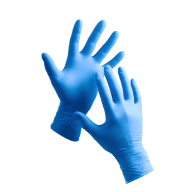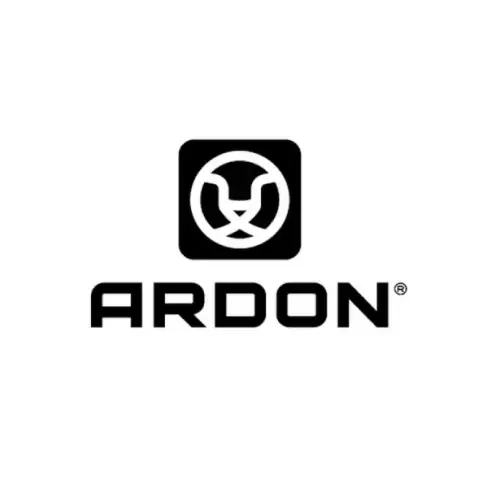JS Gloves Zok Oversleeves 36
Ardon Safety
visit storeProduct description
Product Features:
- Arm sleeve for additional protection of the wrist and forearm
- Can be used in combination with work gloves
- Protection against medium thermal hazards (contact heat up to 100°C)
- Material: Kevlar®
Technical Details:
- Standards:
— EN388 2441X
— EN407 31XX1X
Indicates the visual hue of the protective covering, allowing for color-coding, visibility considerations, or transparency for monitoring protected components.
Measured in meters, the length determines coverage area for proper protection. Crucial for ensuring adequate hazard coverage and optimal fit for specific applications.
Defines the composition of the sleeve or pad, affecting crucial properties like heat resistance, chemical compatibility, durability, and comfort during extended use.
- Cut Resistant
- Heat & Flame Resistance
- Hand Protection
Request a free sample
Test first and buy later. Visit any product page to request your free sample.
Standards and labels
EN 388:2016 is a European standard for measuring the performance of protective gloves against mechanical risks (abrasion, cut, tear, and puncture). The standard includes test methods and performance requirements for gloves to be considered compliant. Test results are reported using a series of four numbers, each representing the performance level achieved in one of the tests.
Test results
Abrasion Resistance Level 2EN 388:2016 is an updated European standard that specifies criteria for testing gloves to protect against mechanical risks, including abrasion, cuts, tears, and puncture. The Abrasion Resistance Level 2 classification within this standard indicates a moderate level of protection against wear from rough materials. The abrasion resistance test involves subjecting the glove material to repeated cycles of sandpaper under pressure until the material wears through. Level 2 abrasion resistance means the gloves can withstand between 500 to 1999 cycles before being penetrated. This level of protection is suitable for tasks that involve handling or coming into contact with abrasive materials but not at an extreme or heavy-duty level. Gloves with Level 2 abrasion resistance are well-suited for general handling tasks, offering durability and protection to extend the life of the glove while maintaining good dexterity and comfort.
Cut Resistance, Coup Test Level 4The standard EN 388:2016, which includes the Cut Resistance Coup Test, is designed to evaluate the protective qualities of gloves against mechanical risks, including cut resistance. A Level 4 result in this context indicates a high resistance to cutting under the specific test conditions described in EN 388:2016. This level indicates that the glove material can withstand at least 10 cycles before the blade used in the testing cuts through the sample material. The Coup Test involves a rotating circular blade which moves back and forth across the sample under a fixed load until penetration occurs. The number of cycles completed by the blade provides a measure of the glove material's cut-resistance. In practical terms for procurement professionals, gloves rated Level 4 in the Coup Test are considered suitable for applications involving handling or assembly in which sharp-edged materials are present, offering a higher level of protection and potentially reducing the frequency of glove replacement due to cutting damage.
Cut Resistance, ISO 13997 Level XThe standard EN 388:2016, specifically its segment referring to ISO 13997 test, is designed to assess the cut resistance of materials used in protective gloves. A result denoted as 'Level X' means that test is not performed and the cut resistance of the product cannot be guaranteed.
Puncture Resistance Level 1The European standard EN 388:2016 addresses the puncture resistance of protective gloves, with puncture resistance classified from Levels 1 to 4. Specifically, a Level 1 result indicates minimal puncture resistance. This level of resistance is determined by a test involving a standardized stylus with a specified diameter and force. During the test, the stylus is pressed against the material with a force up to 20 Newtons to assess how well the glove can withstand penetration. A Level 1 rating signifies that the glove provides basic protection against small punctures or stabs, appropriate for areas with minimal risk. Practical implications for this test result suggest the gloves are suitable for light tasks where major risks of punctures are not anticipated, but are not adequate for handling sharp tools or heavy equipment where higher penetration resistance would be necessary.
Tear Resistance Level 4EN 388:2016 is a European standard that establishes criteria for assessing the protection provided by gloves against mechanical hazards, including tear resistance. The Tear Resistance Level 4 classification represents the highest level of tear resistance defined by this standard, indicating that the gloves can withstand the most substantial forces before tearing. According to the testing methodology, gloves are evaluated by measuring the force required to tear a sample of the glove material, with Level 4 requiring a force of over 75 Newtons to initiate and propagate a tear. This high level of tear resistance is ideal for use in environments where gloves are subjected to significant stress and potential damage, such as in heavy industry, construction, and handling of materials with sharp edges. Gloves achieving this level offer superior durability and are essential for ensuring user safety in high-risk mechanical settings, thereby enhancing work efficiency and reducing the frequency of glove replacement.
EN 407:2020 is a European standard that specifies the safety requirements for protective gloves for thermal risks. It sets rules for the design, construction, and testing of gloves that protect users from heat and fire. Testing includes measurements of contact heat, convective heat, radiant heat, small splashes of molten metal, and flame resistance. The standard also includes requirements for labeling and instructions for use. This standard is an updated version of EN 407:2004, it includes new requirements, testing methods and performance levels to ensure that the gloves provide better protection against thermal risks such as heat, fire and molten metal splash.
Test results
Heat Convection Level XIn the context of EU standard EN 407:2020, a test result signifying Heat Convection Level X indicates that the protective glove tested either did not meet the minimum requirements or was not tested under this criterion. It's vital to interpret such a label as the absence of certified protection against convection heat, which may involve exposure to energetically transferred heat via fluids or gases. The test method used to determine the Heat Convection Level involves measuring the time it takes for heat to transfer from a heated aluminum cylinder through the glove material to the inner surface where it might contact skin, as specified in the standard. The testing apparatus measures the rise in temperature inside the glove to assess its heat insulating properties. Practical implications of achieving 'Level X' in convection heat test suggest that the product is either unsuitable for environments where convection heat is a risk, or it necessitates further testing to ascertain its protective capabilities in specific conditions, crucial information for procurement decisions in safety-related industries.
Heat Contact Level 1EN 407:2020 sets the standard for evaluating the performance of protective gloves against thermal risks. A result of Level 1 for Heat Contact indicates minimal protection, where the glove material can delay the transfer of heat from a surface at 100°C for at least 15 seconds. This test result is established through method EN ISO 12127-1, where a glove sample is exposed to a hot surface at a specified temperature and the time is measured until the glove's interior temperature rises by a certain degree. For procurement professionals, a Level 1 rating suggests suitability for environments with low heat risks, providing brief contact protection that can be crucial for tasks involving occasional, quick contact with warm objects without continuous exposure to high heat.
Burning Behaviour Level 3The EN 407:2020 standard specifies the requirements for protective gloves meant to guard against thermal risks like heat and/or fire. Under Level 3 in the 2020 revision of this standard, protective gloves must demonstrate enhanced performance in terms of limited afterflame and afterglow times when exposed to fire. Specifically, for Level 3, the gloves are required to have an afterflame time of no more than 3 seconds and an afterglow time of no more than 25 seconds. This level is designed for situations where there is a need for robust protection against intermittent but potentially higher-intensity fire exposure.
Molten Metal Resistance Level XEN 407:2020 is a European standard that provides specifications for protective gloves to safeguard against thermal risks, including the exposure to molten metals. The designation Molten Metal Resistance Level X indicates that the gloves have not been tested for this specific risk, or they failed to meet the minimum requirements set out in the standard for protection against molten metal splashes. This means that the gloves are either unsuitable for use in environments where there is a risk of contact with molten metals, or additional testing is required to determine their suitability. Typically, such a classification implies that the gloves should not be used for handling molten metals and should only be considered for other types of thermal risks specified in the standard, where molten metal exposure is not a concern. This classification helps in ensuring that users select the right type of glove based on the specific hazards present in their working environment, thereby preventing inappropriate use and enhancing safety.
Metal Splash Resistance Level 1EN 407:2020 is a European standard that specifies the requirements and test methods for protective gloves intended to protect against thermal risks, including exposure to hot metals. The Metal Splash Resistance Level 1 indicates that the gloves provide basic protection against small splashes of molten metal. The test assesses the glove's ability to resist the penetration and accumulation of molten metal on the glove surface. In the Level 1 test, the glove must resist at least 10 droplets of molten metal without the metal penetrating the glove to a degree that could cause harm to the wearer. This level of protection is suitable for environments where exposure to molten metal splashes is minimal and not severe, such as in light metal casting or welding tasks. Gloves with Metal Splash Resistance Level 1 help protect workers from minor injuries and burns, providing a basic level of safety in conditions where occasional contact with hot metals may occur.
Radiant Heat Level XEN 407:2020 is a European standard that sets the requirements for protective gloves to defend against various thermal hazards, including radiant heat. The designation Radiant Heat Level X indicates that the gloves have not been tested for this specific type of protection, or they did not meet the minimum criteria established by the standard for resisting radiant heat. This means that these gloves are not certified for protection against radiant heat, which involves the transmission of heat through infrared rays from a heat source without direct contact. The lack of a specific radiant heat protection level suggests that users should not rely on these gloves for tasks where significant exposure to radiant heat is expected. Instead, these gloves might be suitable for other types of thermal risks for which they are certified, ensuring users select the appropriate type of protective glove based on the specific hazards present in their working environment. This classification assists in preventing inappropriate glove use and enhancing worker safety by clearly indicating the limitations of the glove's protective capabilities.
CE Marking is a label that shows a product meets certain safety and environmental standards set by the European Union. To get the CE Marking, a company must test and certify their product meets these standards. CE Marking is required for many products sold in the EU, including electronics, machinery, toys and medical devices. It helps ensure that products are safe for consumers and the environment, and allows for easy trade within the EU.
PPE stands for "personal protective equipment." PPE Category 2 refers to equipment that is more complex, and has a higher level of risk. Examples of PPE Category 2 include safety helmets, ear protection, and fall arrest equipment. In Europe, PPE Category 2 must meet certain safety standards set by the European Union, which means that it must be designed and manufactured to protect the user without causing harm. Companies that make or sell PPE must prove that it meets these standards. They also must have a quality management system in place and have to be audited regularly by a notified body.
Ardon Safety delivery terms
Free delivery when you order more than 150,00 € from Ardon Safety
Supplier shipping fee 6,68 €
Brand minimum 130,00 €
10,51 €
Shipping fee is 6,68 € for orders under 150,00 €
Sold in units of one pair
Need larger quantities?
Other products you may like
Recently viewed
Need help?
Get help from our experts
Other products you may like
Similar products you may like
Recommended for you
Ardon Safety
Delivery time: 4 business days
Orders from 130,00 €
Supplier shipping fee 6,68 €
Free shipping on orders over 150,00 €



Find +150,000 products from hundreds of brands
Autonomous sourcing platform
The most efficient way to source and order supplies for your operations
Sourcing
Ordering
List products you’re looking for and we’ll find the best products and prices for you – all for free.
Need help?
Get help from our experts
